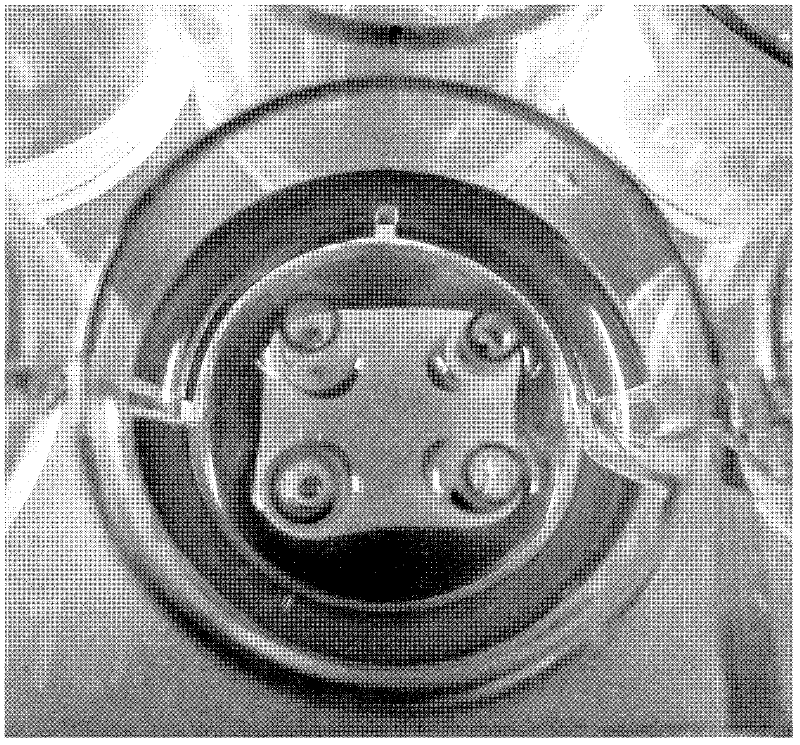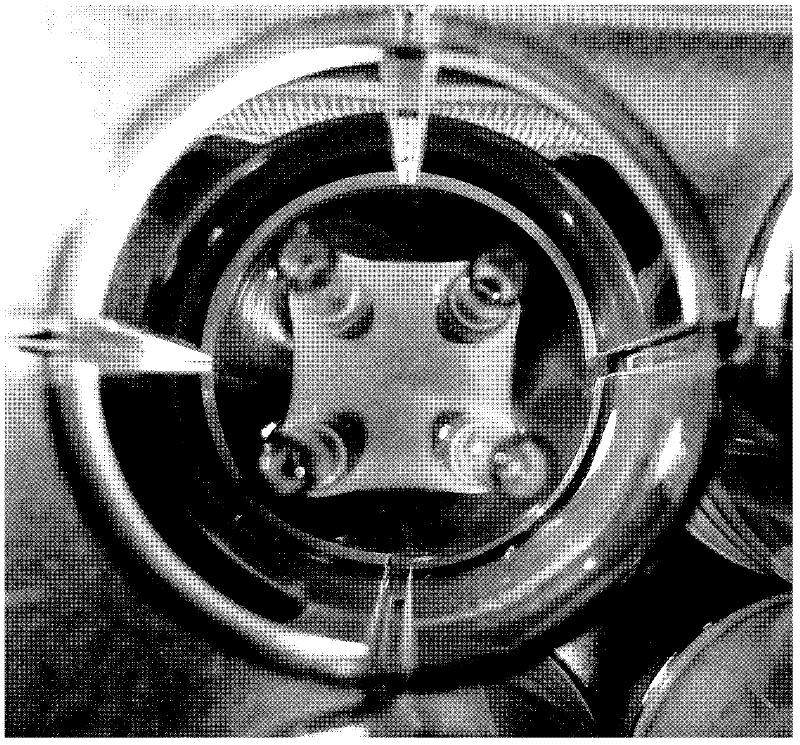Tissue engineering lymph node model and construction method thereof
A technology of tissue engineering and construction method, applied in medical science, prosthesis, etc., to achieve the effect of simple operation process and mild implementation conditions
- Summary
- Abstract
- Description
- Claims
- Application Information
AI Technical Summary
Problems solved by technology
Method used
Image
Examples
Embodiment 1
[0027] Example 1 Using human peripheral blood mononuclear cells as seed cells to construct a tissue engineered lymph node model
[0028] (1) Separation of human peripheral blood mononuclear cells by density gradient centrifugation
[0029] The heparinized anticoagulated blood was diluted one-fold with Hanks solution, spread lightly on Ficoll separation medium (specific gravity 1.077g / mL), and then centrifuged horizontally at 2000rpm for 30min. Mononuclear cells are suspended in the upper layer of the separation medium and appear as a white film. Carefully draw the mononuclear cell layer with a pipette, add Hanks solution and wash 3 times. Add RPMI-1640 medium containing 10% fetal bovine serum for routine culture.
[0030] (2) Isolation and culture of primary mouse fibroblasts (MEFs)
[0031] The embryonic tissues of dead pregnant mice were taken, transferred to culture flasks, and washed with PBS. Pour off the PBS, add an appropriate amount of trypsin solution for digestio...
Embodiment 2
[0040] Example 2 Using mouse bone marrow mononuclear cells as seed cells to construct a tissue engineered lymph node model
[0041] (1) Separation of mouse bone marrow mononuclear cells by density gradient centrifugation
[0042] Take the femur of the dead mouse, put the femur into sterile cold PBS; use a 1mL syringe to flush out the cells in the mouse femur until the femoral cavity is white; mix the cells well, use a 200-mesh filter to filter, collect and filter Liquid in a 10mL centrifuge tube, 1500rpm. Centrifuge for 5 minutes; discard the supernatant, add 8 mL of NH4Cl-Tris solution, suspend the cells, dissolve the red blood cells for about 6 minutes, centrifuge at 1500 rpm for 5 minutes. Discard the supernatant, add 5mL sterile cold PBS to the centrifuge tube, and resuspend the cells; gently add the above cell suspension to 5mL Ficoll-paqul (1.086g / mL), centrifuge at 1500rpm for 30min; carefully take out the centrifuge tube, the solution Divided into three layers: trans...
Embodiment 3
[0053] Example 3 Using mouse spleen lymphocytes as seed cells to construct a tissue engineered lymph node model
[0054] (1) Separation of mouse spleen lymphocytes by density gradient centrifugation
[0055] The spleen tissue of the dead mouse was taken, placed in sterile cold PBS, then the spleen was cut into pieces, filtered through a 200-mesh filter, and the filtrate was collected in a 10mL centrifuge tube at 1500rpm. Centrifuge for 5 minutes; discard the supernatant, add 8 mL of NH4Cl-Tris solution, suspend the cells, dissolve the red blood cells for about 8 minutes, centrifuge at 1500 rpm for 5 minutes. Discard the supernatant, add 5mL sterile cold PBS to the centrifuge tube, and resuspend the cells; gently add the above cell suspension to 5mL Ficoll (1.086g / mL), centrifuge at 2000rpm for 15min; carefully take out the centrifuge tube, and divide the solution into Three layers: from top to bottom are transparent PBS layer, mononuclear cell layer, and RBS layer; use a thin...
PUM
 Login to View More
Login to View More Abstract
Description
Claims
Application Information
 Login to View More
Login to View More - R&D
- Intellectual Property
- Life Sciences
- Materials
- Tech Scout
- Unparalleled Data Quality
- Higher Quality Content
- 60% Fewer Hallucinations
Browse by: Latest US Patents, China's latest patents, Technical Efficacy Thesaurus, Application Domain, Technology Topic, Popular Technical Reports.
© 2025 PatSnap. All rights reserved.Legal|Privacy policy|Modern Slavery Act Transparency Statement|Sitemap|About US| Contact US: help@patsnap.com


